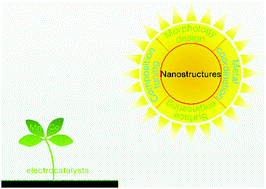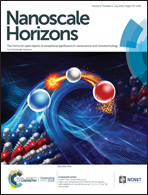Recent advances in developing high-performance nanostructured electrocatalysts based on 3d transition metal elements
Abstract
Electrocatalysis for clean energy conversion, including water splitting (hydrogen and oxygen evolution) and oxygen reduction, has been considered as a pivotal strategy to alleviate the increasing energy crisis and environmental pollution derived from the overuse of nonrenewable fossil fuels. Since the current electrocatalysts are usually based on high-cost and scarce noble metal elements (Pt, Ru, and Ir), developing low-cost and earth-abundant catalysts is of great practical promise for realizing industry-scale applications. In this regard, electrocatalysts based on 3d transition metal elements (Mn, Fe, Co, and Ni, etc.) have been proposed as a class of prospective materials due to their abundance and high activity. In this work, recent advances in developing high-performance nanostructured electrocatalysts for sustainable clean energy conversion are briefly reviewed, with a particular focus on morphology design, composition tuning, surface engineering and metal coordination symmetry/geometry control. The latest studies indicate that carefully designed nanostructures based on 3d transition metal elements can attain comparable electrocatalytic performance to the commercial noble metal-based counterparts. This review may offer new insights into the rational design of nanostructures with further improved electrocatalytic activity and pathway selectivity to achieve the ultimate goal of realizing renewable electrochemical energy conversion.

- This article is part of the themed collections: Recent Review Articles and Advisory Board research selection


 Please wait while we load your content...
Please wait while we load your content...